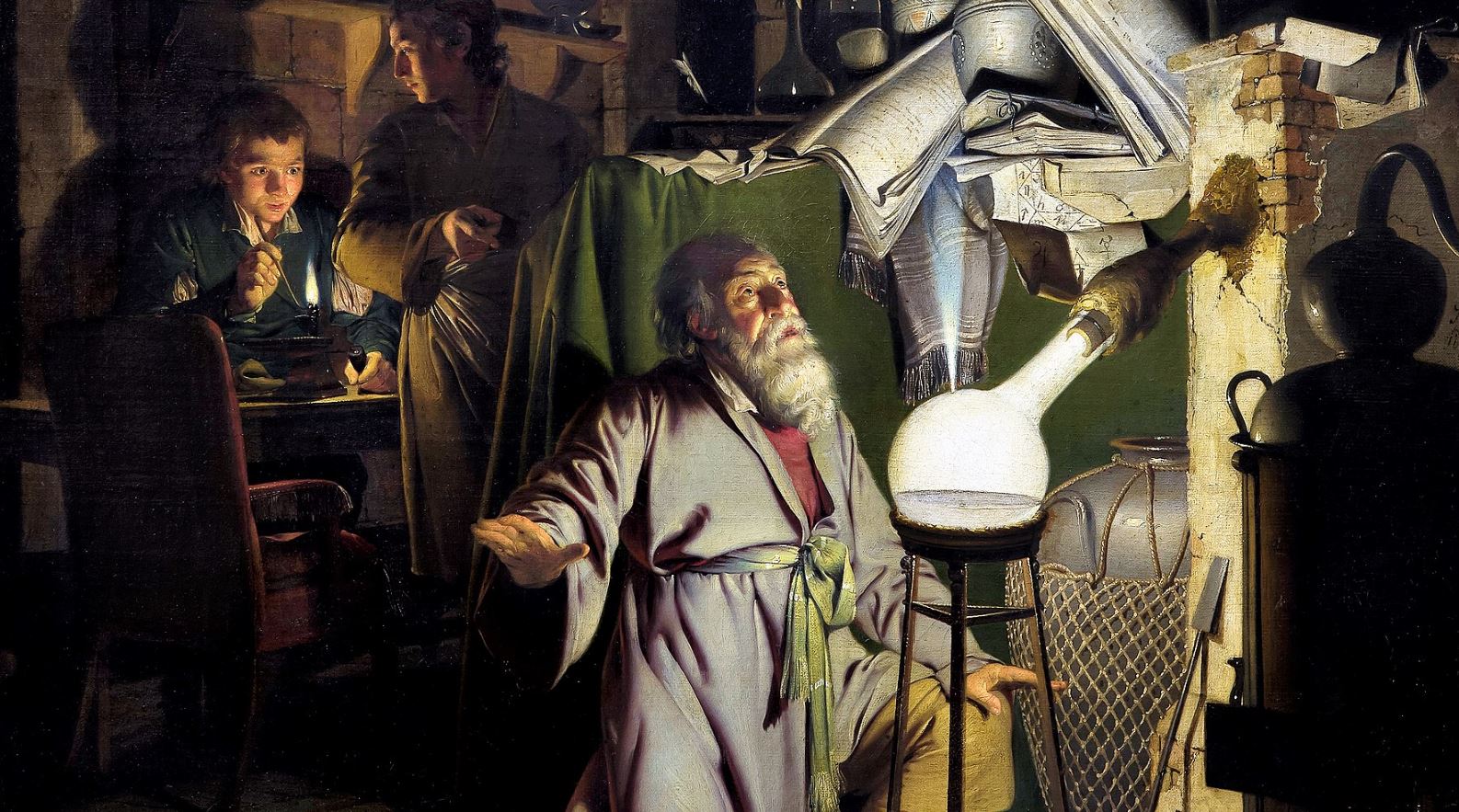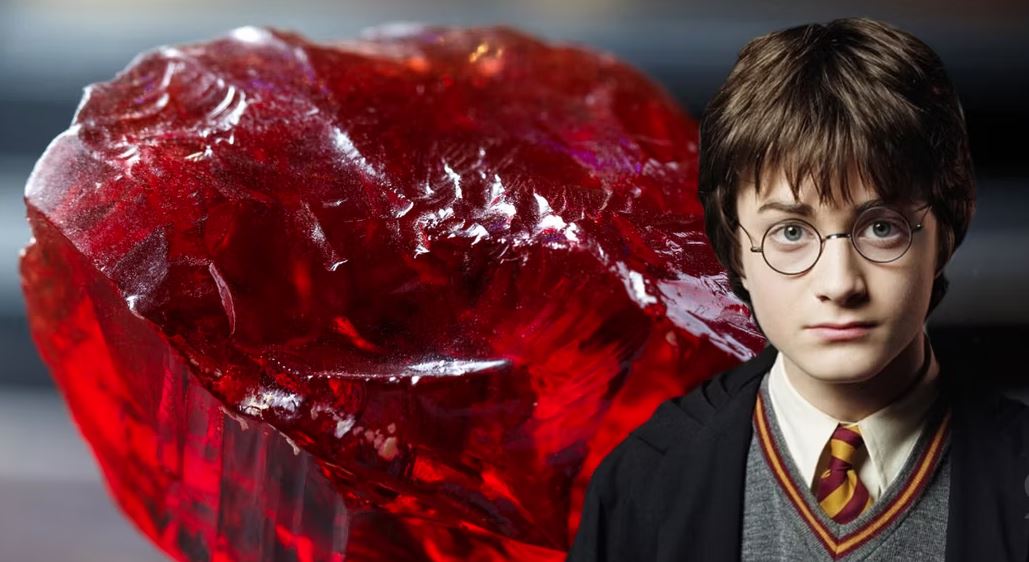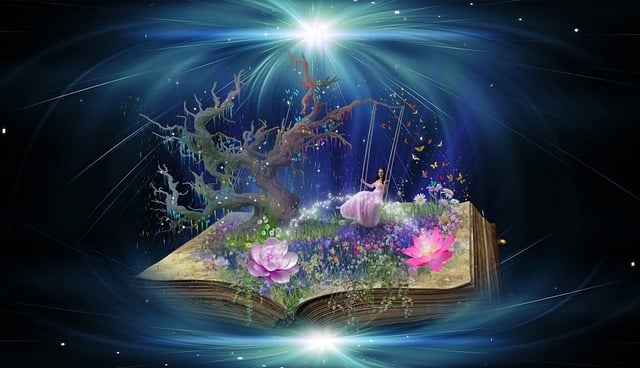
In occult lore there existed a certain stone that would be imbued with magical properties. This stone would be able to turn common metals, such as brass, copper, and iron into gold and at times into silver and be able to turn a drink, such as a glass of water or wine, into an elixir of life that would grant immortality after being drunk. Various alchemists have claimed to have performed alchemy through the use of that miraculous stone. The idea of having immortality from the stone seems to have come about many centuries later.
Originally, the Philosopher’s Stone was a stone that miraculously would turn itself into either gold or silver. Then, through the passage of time, the occultic item became a stone or a very small rock that would be a talisman that would transform common metals into gold or silver. The so-called Philosopher’s Stone, is really something of a natural occurrence, but misunderstood by the ancients to be magical: the element Mercury. Mercury is a naturally occurring chemical element found in the earth’s crust, including in deposits of coal,.While mercury can be found in other places, such as air, water, and soil, mercury is normally in just very scant amounts in these areas.
Mercury is rarely found in nature as the pure, liquid metal, but rather within compounds and inorganic salts. In its natural state, mercury is a shiny, silver-white metal, historically referred to as “quick silver”. The ancients mistaken though the element was silver. At room temperatures, elemental or metallic mercury melts and appears as a solid, but a liquidly shiny yellow metal that the ancients mistook for gold. Elemental mercury is very toxic; poisonous.
In very, rare cases, the ancients found enough mercury that would have been sufficient to constitute the size and mass of an ordinary small stone. In today’s modern world, mercury is an extremely rare element in the earth’s crust having an average crustal abundance by mass of only 0.08 parts per million (ppm). Currently, the heavy metal is even more rare than gold. Mercury was first known in antiquity,but we do not know who first discovered it. The metallic element was known to the ancient Chinese, Egyptians, and Hindus and has been found in Egyptian tombs dating back from 1500 BCE. In the fourth century BCE, the Greek scientist, philosopher, and mathematician Aristotle (born 384 BCE, died 322 BCE) referred to mercury in his writings as “hydro argyros” which translates as “liquid silver or water silver”.

A great many alchemists, from ancient times to medieval times and even centuries afterward, never knew of the connection behind mercury and the apparent, but mistaken idea of the transformation of itself or of other substances into gold or silver. To these alchemists, in their minds, the Philosopher’s Stone was something else. Actually, the Philosopher’s Stone is also a certain common metal that when heated to a certain high temperature caused it to appear to be gold which the ancients mistook for gold. The alchemists often used certain procedures in which extreme heating of substances were involved. This other Philosopher’s stone is a piece of the transition metal zinc. Zinc metal was not produced on a large scale until the 12th century in India, though it was known to the ancient Greeks and Romans. When 20% of zinc is mixed with copper and heated very hot, the combined metals produce a golden yellow color that the ancients mistook for gold. If the metal brass,which is composed of copper and zinc, with 45% to 40% zinc is heated very hot, the same effect occurs producing a golden yellow color the ancients mistook for gold. As for claims made over a Philosopher’s Stone that grants immortality by acting as a talisman, that belief is pure fantasy that goes against rational modern day research science.
People wrongly thought that since the Philosopher’s would produce gold and since gold can be in personal possession for many, many years and still look very good; gold can look very nice even after centuries or eons; that immortality would amazingly; occultly radiate from the so-called Philosopher’s Stone. Pure gold and only pure gold; not any other type of gold, can be thousands of years old and does not tarnish nor change color. But, alloyed gold ( gold that has metals like silver, copper, and nickel mixed in) will tarnish; such gold exposed long enough to oxygen, as sulphur in the air, and the alloyed gold being exposed to sweat, make-up, soaps, lotions, perfumes, and other chemicals will tarnish, patina, change color in due time.
Over the many centuries as alchemists emerged claiming to produce base metals into gold, then being employed by people to produce gold for them; the fake alchemists told fantastic lies and used trickery to make people believe in alchemy. There were alchemists who also used their fake Philosopher’s Stones that they tried to sell to their victims after passionate acts of lying to them. For centuries, countries have outlawed alchemy. Not just for the fraud, but because rulers were afraid of undermining the gold standard and silver standard, of corrupting the gold supply and silver supply in Europe. One big lie the crooked alchemists thought they could get away with, at least for years and years, was that their alleged Philosopher’s Stone would grant immortality to people.
Although mercury is rare to find, in most cases; in substantial quantities, mercury can commonly and rather abundantly be found in cinnabar. Cinnabar is the most prevalent ore of oxidized mercury. the oxidation makes the mercury safe to handle, that is found in nature. Cinnabar occurs in granular crusts or veins associated with volcanic activity. The mineral is discovered in various mines and contains sulphur and has up to 70% of mercury.
In occult legends, the Philosopher’s Stone is red, and cinnabar is a reddish mineral. Sometimes it is a light red color; other times it is a very dark red color. At times, blackness can be seen within the red cinnabar because of metacinnabar: a black colored form of mercury (II) sulfide, that crystallizes in the cubic crystal system. Cinnabar can be in powdered form, if a solid block of it is crushed; grounded, which is easy to do. In occult lore, in a small number of cases, the Philosopher’s Stone has been described as a reddish powder or tincture.
Cinnabar was known to the ancient Greeks before the fourth century BCE. When cinnabar is burned; it releases toxic; vapors very poisonous mercuric fumes which the ancients were aware of.


